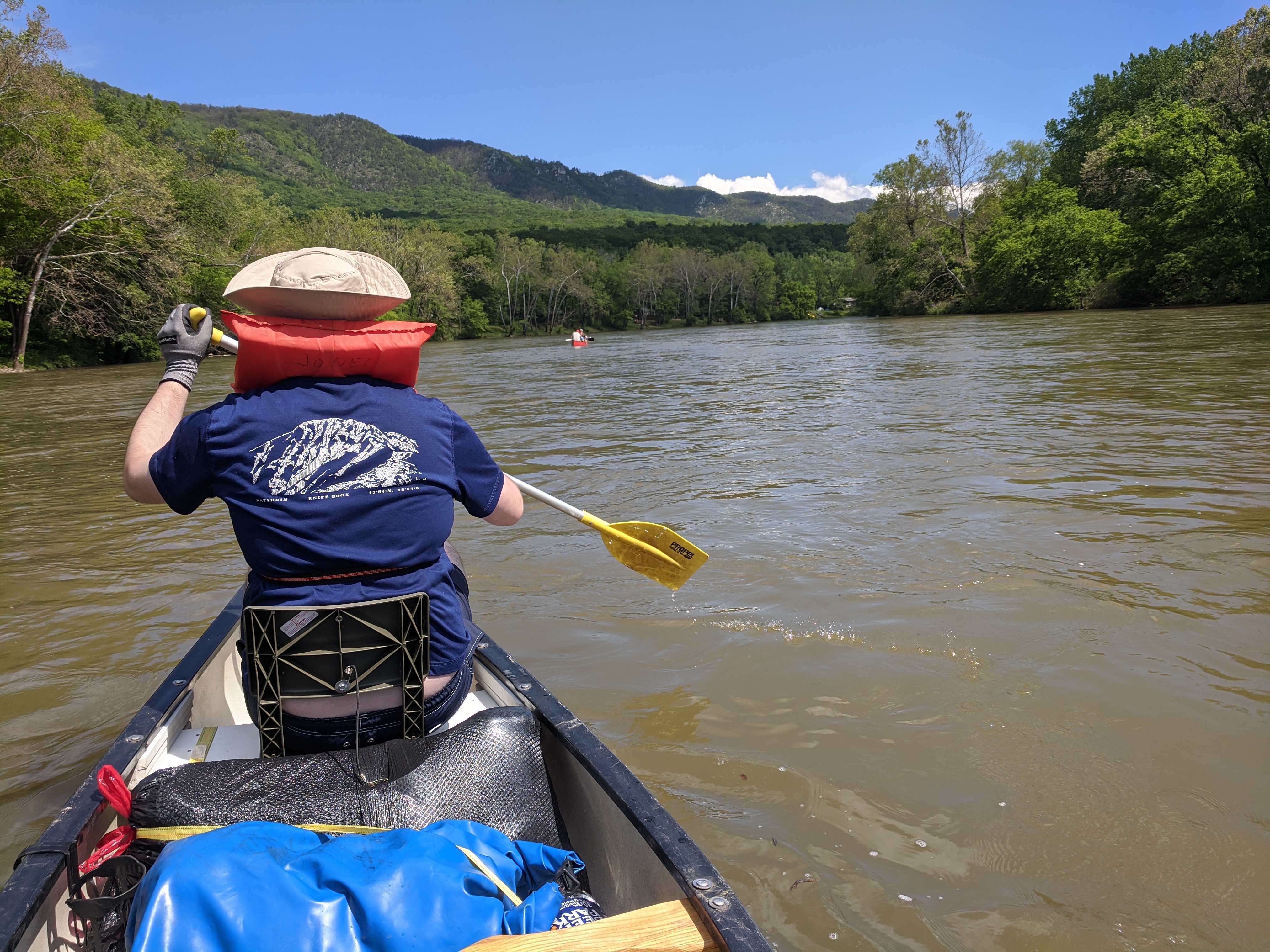Thoughts on the OODA loop and falling out of a canoe
In my never ending quest for synthesis, this post combines thoughts on the OODA loop and falling out of a canoe twice this weekend in rapids on the Shenandoah river. There is a connection. Maybe.
If you want to see the full trip report, pictures, etc. go here Things that fall in the river get wet. If you’re interested in how this relates to the OODA loop or, better, if you have experience/thoughts on applying the OODA loop to operational cybersecurity settings, read on (and comment !)

Figure 1: On the river during calm between crisis events
1 The OODA Loop
The OODA loop is a concept cybersecurity has borrowed from the US Air Force. “OODA” stands for “Observe, Orient, Decide, Act”. The OODA loop began as a very fighter-pilot-centric view of a problem space. I always think of Snoopy and the Red Barron. Snoopy observes the Red Barron at a distance, orients his Sopwith-Camel towards the Red Barron, decides to fire, and then acts by firing-away. Then repeat the OODA loop. Observe: what was the effect of your action (the Red Barron went down in flames, or you missed and now he’s on your tail)…
2 The OODA Loop and falling out of a canoe
The OODA loop parallels my decision making process in the rapids this weekend. In one of our two crisis events I observed the other canoe flip in the rapids ahead. I oriented my canoe towards shore. I decided to grab a tree root to buy time to sit and contemplate options. I acted by grabbing the tree root. We flipped due to the strong current. REPEAT. I observed that we were in the water 10 or 20 yards (9 to 18 meters) from the start of the rapids. I oriented myself towards shore. I decided to swim to shore at all costs (loosing the canoe and all our gear) rather than float the rapids in life jackets. I acted by swimming to shore. REPEAT. I observed that we were safe on shore without our boat, gear or friends. I oriented myself downstream. I decided to walk in search of boat, gear and friends. I acted by walking…
3 Where does the OODA loop work well?
The OODA loop seems to be a good model for rapidly changing situations where the personal stakes to the actor are high, the actor is receiving relevant information in a timely fashion and has the ability to decide on appropriate action and execute in a very short timescale. There were elements of this in Bill Cheswick’s classic An Evening with Berferd and Cliff Stoll’s The Cuckoo’s Egg, but I am wondering how many of these conditions apply, to, say the modern SOC?
4 Does the OODA loop work in SOCs?
How do the characteristics of crisis situations such has that described above or a fighter pilot in dogfight map to the modern SOC? Does a SOC have a rapidly changing situation? Probably. Are there personal stakes for the actor (analyst)? It depends. Is it just “work my shift and go home after the hand-off”? Are the actors (analysts) receiving relevant information in a timely fashion? Or are they waiting for a weeks-long (months-long?) approval process for the ingest of needed data, the provisioning of enough storage and compute power to run the queries they need? Are they empowered to take action in a short timescale? Or are there three levels of management approval needed and reports to be written before any action can taken? Can they take machines offline, implement blocks, etc? Even if it impacts production? Can they observe, orient, decide and act, or is it time to put your feet up, hope for the best and float through the rapids?
Your thoughts? Experiences?
Days 17 of #100DaysToOffload https://100daystooffload.com/